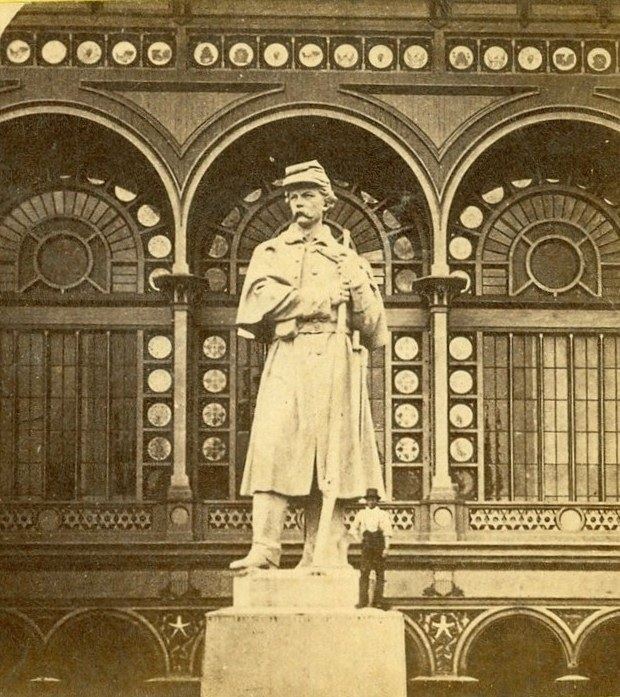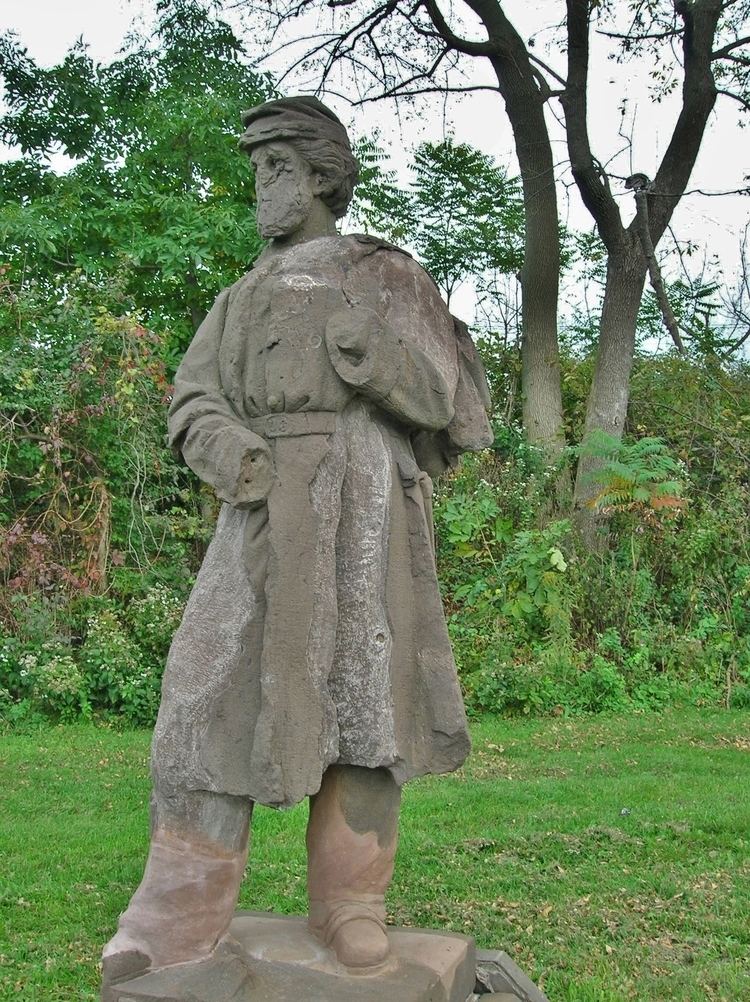Name Carl Conrads | ||
 | ||
Carl H. Conrads (February 26, 1839 in Breisig, Germany – May 24, 1920 in Hartford, Connecticut) was an American sculptor best known for his work on Civil War monuments and his two works in the National Statuary Hall Collection at the U.S. Capitol in Washington, D.C. He was also known as Charles Conrads.
Contents

Biography

He was born in Sinzig-on-the-Rhine, the son of Heinrich Joseph Conrads and Johanna Maria Catherina Fleischer. His father was mayor of their town until removed from office by the Prussians in 1850. In 1853 his parents and brother Robert emigrated to Texas, where they became farmers and furnituremakers. Carl remained in Munich and received a diploma from the Koeniglich Bayerische Akademie der Bildenden Kunste. He emigrated to New York in 1860, and served as an artilleryman in the 20th New York Volunteers during the American Civil War. He moved to Hartford, Connecticut in 1866 to work for James G. Batterson at the New England Granite Works, where he worked until 1903.
A reference from 1879:
Another German artist, Carl Conrads, has been for twelve years connected with the Hartford Granite Company [sic]. He is perhaps over-modest regarding his work as a sculptor, which is surely very good of its kind. Among his best designs are the figures on the Antietam Monument. In 1871 he returned to Munich for a short visit, availing himself of the opportunity for still further study. As a designer of monuments, his work stands high.
Sculptor and sculpture historian Lorado Taft said of him: "a German of good training, has identified himself with sculpture in granite, and has done much creditable work well adapted to the requirements of that ungrateful material."
Noteworthy among his granite works are his colossal American Volunteer statue at Antietam National Cemetery in Sharpsburg, Maryland; his seated figure of Morality on the National Monument to the Forefathers in Plymouth, Massachusetts – "said to be the largest solid granite monument in the world;" and his Alexander Hamilton statue in Central Park, New York City.
Conrads is buried in West Hartford, Connecticut; his grave is marked with a simple stone.
